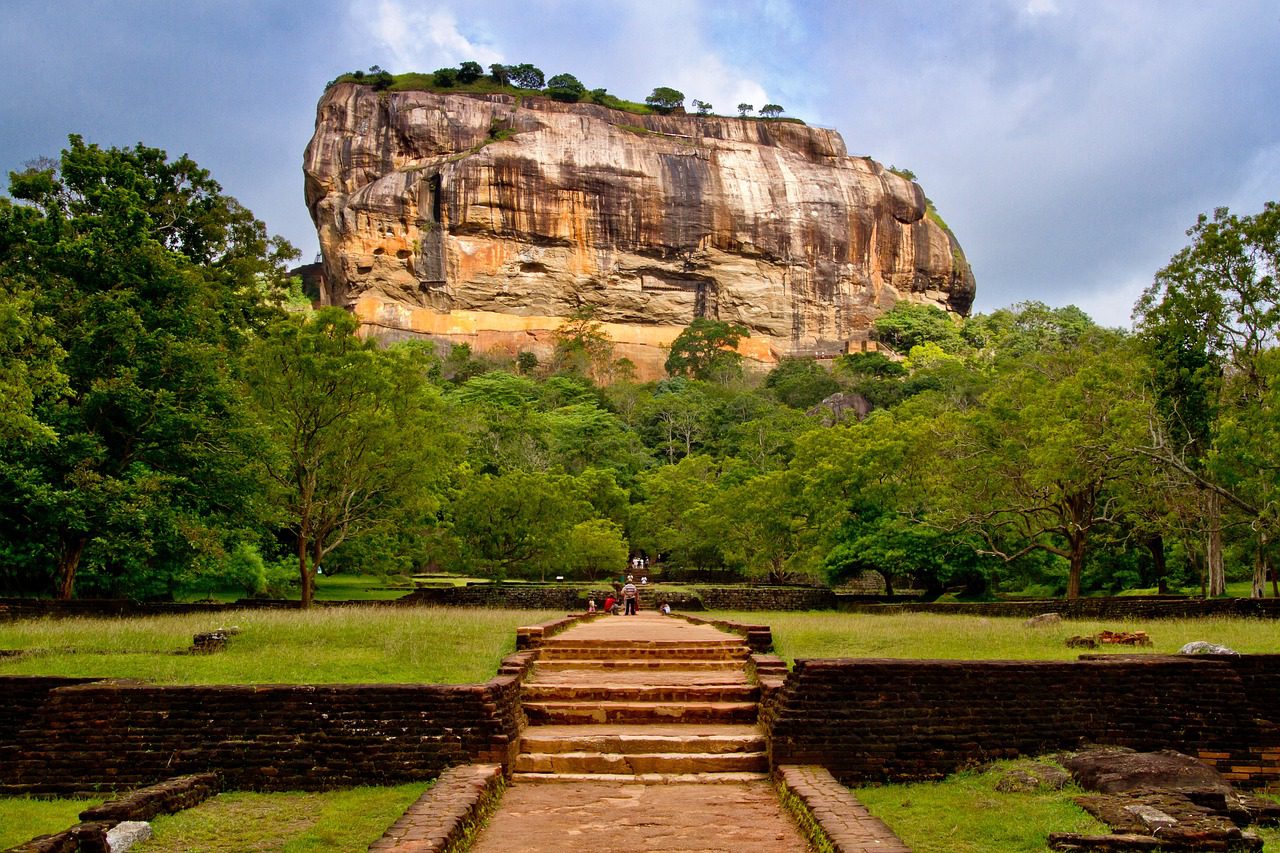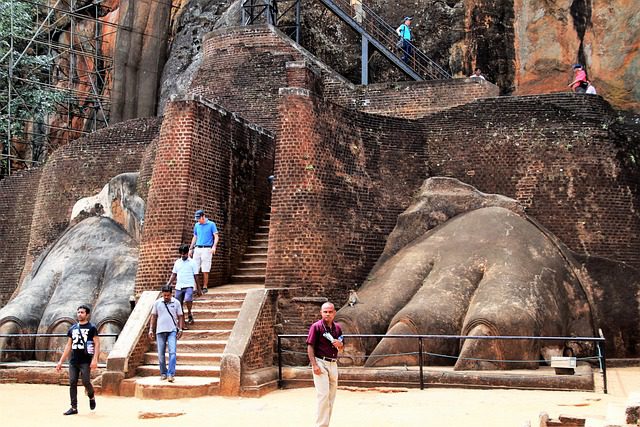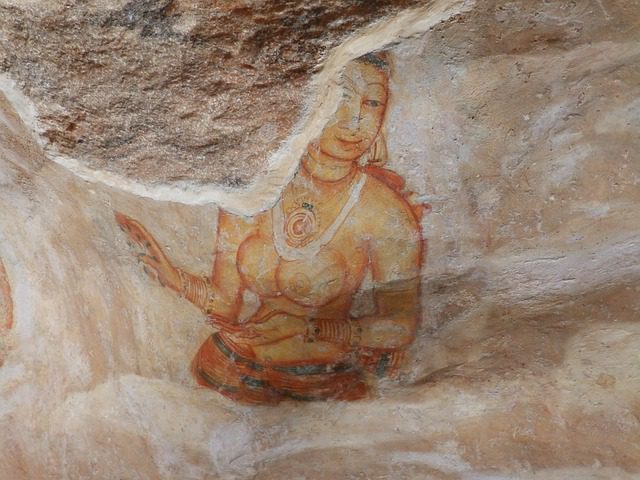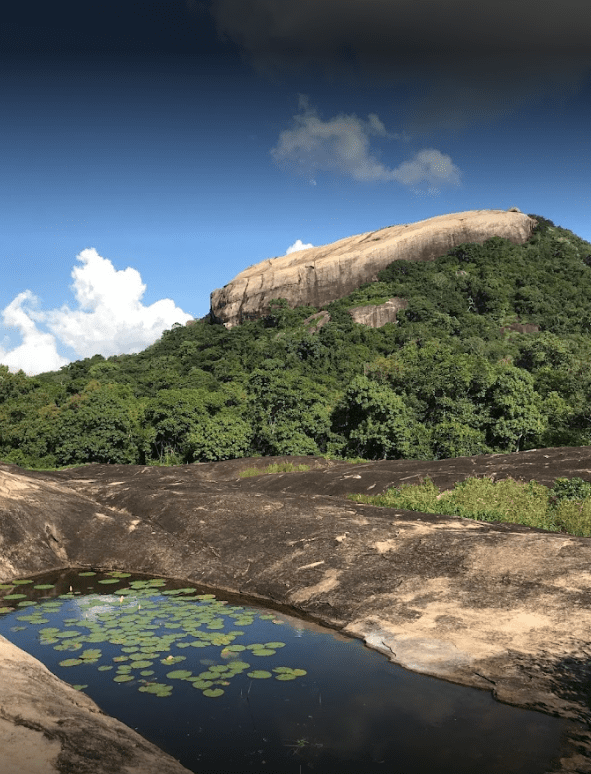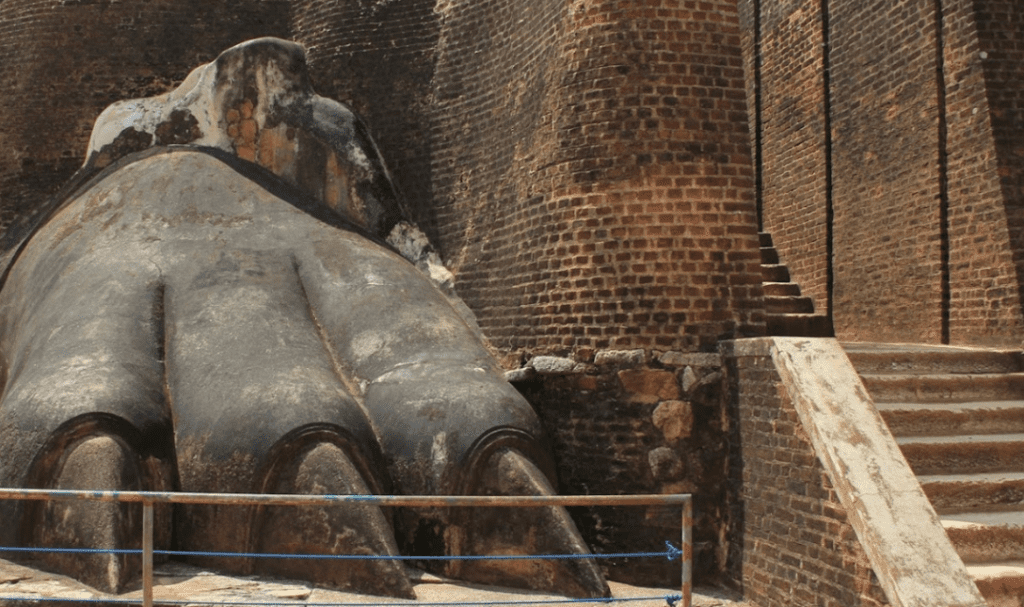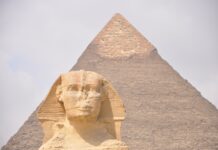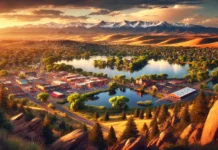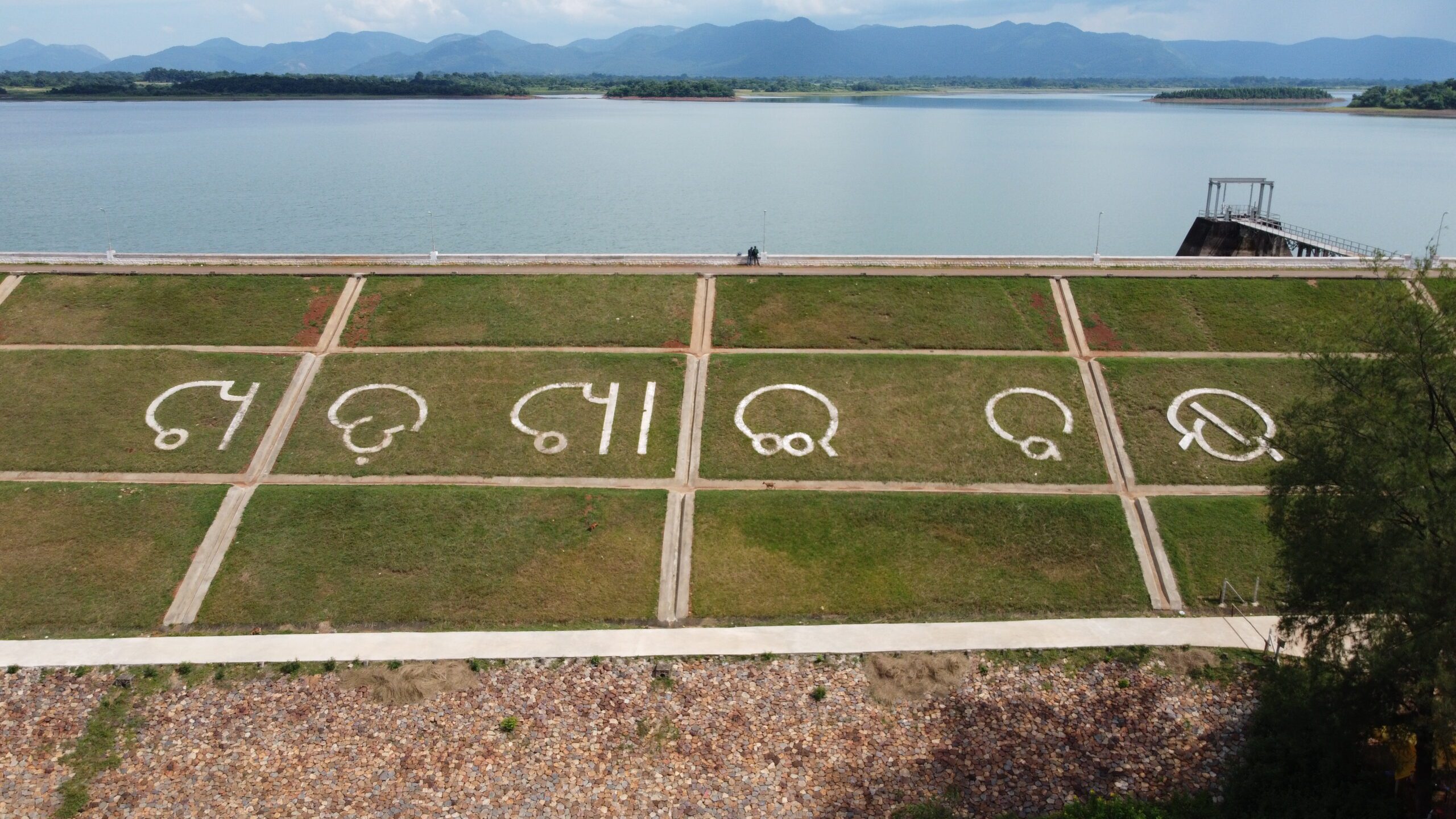Sigiriya Rock Fortress – Sri Lanka’s Engineering Masterpiece of the Ancient World
Sigiriya Rock Fortress – Sri Lanka’s Engineering Masterpiece of the Ancient World: Stories of the advanced capabilities of Hindu deities of ancient times can be found throughout India. However, just south of the Indian subcontinent, lies the awe-inspiring island country of Sri Lanka, renowned for its stunning landscapes, diverse culture, and UNESCO world heritage sites.
Google Map: Sigiriya Rock Fortress
One of the most impressive places in Sri Lanka is Sigiriya Rock Fortress, a site often hailed as the 8th wonder of the world. Sigiriya is home to an ancient city situated at the top of a monolithic rock that towers 650 feet over the town of Dambulla in the Matale District of Sri Lanka. The site attracts thousands of tourists daily and has been a UNESCO heritage site since 1982.
The giant monolithic rock looks unnatural due to its perfectly flat top, which appears to have been cut at a precise angle. According to modern archaeologists, the earliest settlement on top of the Sigiriya Rock was the Lion’s Fortress, built in the 5th century AD. The bulk of the site, including its palaces and enormous granite water tank, was constructed under the command of a rogue king known as Kashyapa.
However, the locals believe this ancient site was built thousands of years before that by an ancient Hindu god named Ravana, who was part of a race of beings known as the Asura. These deities are said to have come down from the sky and ruled over portions of humanity.
Ram Setu, an ancient bridge built between India and Sri Lanka by the god Rama
In one of our recent articles, we discussed in detail the magnificent Rama Setu, an ancient bridge built between India and Sri Lanka by the god Rama, who waged war against Ravana. We provided much evidence supporting the belief that Rama Setu was indeed an artificial bridge built thousands of years ago by unknown beings.
Hindu epics state that Ravana ruled Sri Lanka from his palace in Sigiriya, which was destroyed after the war with Rama. Could it be possible that what we see today in Sigiriya is the remains of the ruined palace of Ravana? If the stories about Rama Setu turn out to be real historical accounts, could the stories about Sigiriya be real as well? Could Sigiriya have been used by ancient civilizations, and perhaps even by Hindu deities, thousands of years before King Kashyapa built his fortress there?
The area surrounding Sigiriya shows signs of human habitation stretching back to the Mesolithic period, some 5000 years ago. Additionally, there is evidence of the various rock shelters and caves in the area having been used by Buddhist monks in the last few centuries before the common era.
King Kashyapa
Despite this, conventional archaeologists believe that the site was first used during the reign of King Kashyapa at the end of the 5th century. Kashyapa was King of Sri Lanka from 473 to 495 CE, and he only came to power after organizing the assassination of his father and usurping the throne from under his brother, the rightful heir.
Fearing for his life, legends state that King Kashyapa moved to the area surrounding Sigiriya where he built a fortress on top of the megalithic rock, believing it would be impenetrable to his brother’s army. However, Kashyapa’s army was eventually defeated, and instead of being captured, he died by suicide.
After his death, his brother, Moggallana, gave the site of Sigiriya to the Buddhist monks, where it remained a monastery until the 14th century. The site was abandoned during the 15th century and remained uninhabited until Westerners discovered it. Major Jonathan Forbes, a British army officer, stumbled upon the ancient ruins of Sigiriya during a horseback ride.
Following Forbes’s discovery, various western archaeological crews conducted small excavations on the area in the following years and were perplexed by what they found. There were telltale signs of advanced engineering capabilities at Sigiriya, such as one of the best-preserved examples of urban planning and techniques and technology far more advanced than previously thought possible during this time period. The city’s layout features symmetrical and asymmetrical aspects, intentionally designed to work with the site’s natural surroundings.
Detail About Sigiriya Rock
At the site, there were a variety of structures, but their purpose remained unknown to archaeologists, leading to the general belief that they were citadels, palaces, houses, and gardens. One particular area of the site resembled a step pyramid with features similar to those found throughout Mesoamerica.
On the west side of the city, there was another park where archaeologists found additional signs of advanced ancient engineering. The park contained various water-retaining structures, including a sophisticated hydraulic system that provided water to the gardens. This unique design was made up of canals, lakes, dams, and water pumps, demonstrating that the construction of this site involved careful planning.
Interestingly, some of these hydraulic systems still provide water to the area even to this day. The structures found on top of the monolithic rock were made from clay bricks, which baffled archaeologists as they struggled to explain how ancient builders carried an estimated three million bricks to the top of the rock without any signs of stairways.
The metal stairways present today were only built in the last century for tourists to visit the site. The massive blocks of white marble used in construction are not native to the area, and archaeologists are still unsure where the marble was sourced. Each of the marble blocks is extremely heavy, and there are thousands of them.
So, the question remains: how did ancient builders get tonnes of heavy marble blocks to the top of the monolithic rock without any stairs? This has led many people to question the traditional archaeological view of how this ancient city was built. Various archaeologists have noticed strange tool marks that look like narrow channels all along the side of the rock, which were carved in ancient times, yet there is no answer as to how they were made at places where there were no slopes for humans to stand.
Moreover, there are profound circular holes drilled into the monolithic rock close to its peak. Again, archaeologists struggle to explain how these holes were drilled with early tools. Next to the drilled holes, we can find strange groove marks. The purpose of these marks, or how they were made, remains a complete mystery. Right next to the groove marks, there is another deep drill hole that adds to the mystery.
Despite all these strange markings, the most impressive feature of the site is an enormous granite water tank found in the middle of the settlement.
Water Tank at Sigiriya
Google Map: Sigiriya Tank
From a distance, the water tank at Sigiriya appears to be made of granite blocks, but upon closer inspection, it becomes apparent that the tank is actually carved into the extremely tough granite rock. This enormous tank, which measures 90 feet long, 68 feet wide, and almost 7 feet deep, required over 3,500 tons of granite to be removed by hand to create it.
Given that granite is one of the hardest stones on earth, it would have taken years to remove such an amount of granite using early chisels and hammers. However, there are no signs of chisel or hammer marks on the tank. Instead, long stretches of scoop-like marks can be seen, similar to those found on megalithic sites in Egypt and Peru.
Some scholars have suggested that the ancient builders knew how to manipulate the frequency of rocks, making them soft and easier to carve. The water tank at Sigiriya is an engineering marvel that never dries up, even during the hottest seasons in Sri Lanka. The tank appears to collect water through percolation, a slow filtering process, but it also has a drainage system underneath, ensuring that it never overflows, even during Sri Lanka’s wet monsoon season.
The construction of Sigiriya raises many unanswered questions about the site’s origin and purpose. The unusual scoop marks on the granite and the vast amount of material required to build the structures suggest that Sigiriya is a much more ancient site, possibly even one used in pre-diluvian times.
Some researchers have suggested that the absence of stairs leading to the top of the structure implies that the ancient builders may have possessed antigravity technology and flying vehicles. Local legends suggest that Sigiriya was created by deities who descended from the sky and modeled it on the abode of their god, Kuvera, the god of wealth. Other legends claim that Sigiriya was the palace of Ravana, an ancient God-King of Sri Lanka, who was not born as a normal human, but instead, his ancestors came from the sky.
About Ravaana
It’s said that Ravana belonged to a race known as the Asura, who was described in the Indian texts as powerful superhuman demigods who came to earth thousands of years ago. Many believe these stories are not just mythology, but ancient historical accounts of otherworldly visitors who came to Earth.
Is it possible that the Asuras were the original builders of Sigiriya? Builders who used advanced forms of technology to lift all of the material required for the city’s construction? Throughout Hindu mythology, we can find numerous references to Vimanas, which were the flying vehicles the gods used to travel from heaven to earth and around the planet. One of India’s most sacred texts, the Mahabharata, speaks of aerial cities which belonged to the Asuras, the same race of Gods that Ravana belongs to.
Could it be possible that the Asuras used Vimanas to aid in the construction of the city of Sigiriya? Some sources claim that the Asuras were hybrid beings, and Ravana himself is sometimes referred to as a reptilian god in Hindu mythology. The city of Sigiriya may hold some of the answers surrounding his true identity. As you enter the site of Sigiriya, you first notice two giant carved feet sitting at the front gate.
The locals refer to these as lions’ claws, but lions have four large claws and one small. The claws in Sigiriya are three, which makes many people believe that they actually depicted some sort of reptilian creature. Most ancient reptiles had three large toes, and this is precisely what we observe at the entrance of Sigiriya.
Some locals refer to these feet as those of Ravana. Does that mean Ravana was some sort of reptilian humanoid? In some ancient texts, it is claimed that Ravana was not fully human; only his father was. On the other hand, his mother was a completely different species and may have been a reptilian. So, when Ravana was born, it’s said he was of a hybrid species. Some have even suggested a link between Ravana and the Nephilim giants mentioned in the ancient Christian and Hebrew texts.
Powers Of Ravaana
Ravana is known to have possessed various human and reptilian features, with the ability to shape-shift and become almost invisible. These characteristics are mentioned in numerous ancient texts, including the Ramakien, which describes Ravana as having green, lizard-like skin. Additionally, there are references to a race of reptilian beings known as the Naga who was said to have once inhabited Sri Lanka.
One of the most intriguing mysteries surrounding Sri Lanka is the site of Sigiriya, a massive rock fortress built in the 5th century. Despite being attributed to early human builders, some believe that an advanced group of reptilian gods, such as Ravana’s extraterrestrial race known as the Asura, may have been responsible for constructing the site with their advanced technology.
While conventional archaeologists have suggested that the site was built by human beings with basic tools, it is unclear how these builders could have transported over three million bricks of marble blocks to the top of the rock and cut out three and a half tons of granite without any stairs. Therefore, the possibility of an unknown form of advanced technology being used in construction cannot be ruled out.
The idea that ancient beings with advanced technology, such as the Asura, could have influenced human history is an intriguing possibility that is supported by many ancient texts. It is up to individuals to decide for themselves whether they believe in such theories, but it is always interesting to explore these mysteries and consider the possibilities.
In Conclusion
There are many mysteries surrounding Sri Lanka’s Sigiriya Rock Fortress and its ancient history, including the site of Sigiriya and the existence of reptilian beings like Ravana and the Naga. Further exploration and investigation are needed to uncover the truth behind these enigmatic tales.
Related Articles: Sundarban Tour Package Minimum Budget and Maximum Entertainment From Kolkata

